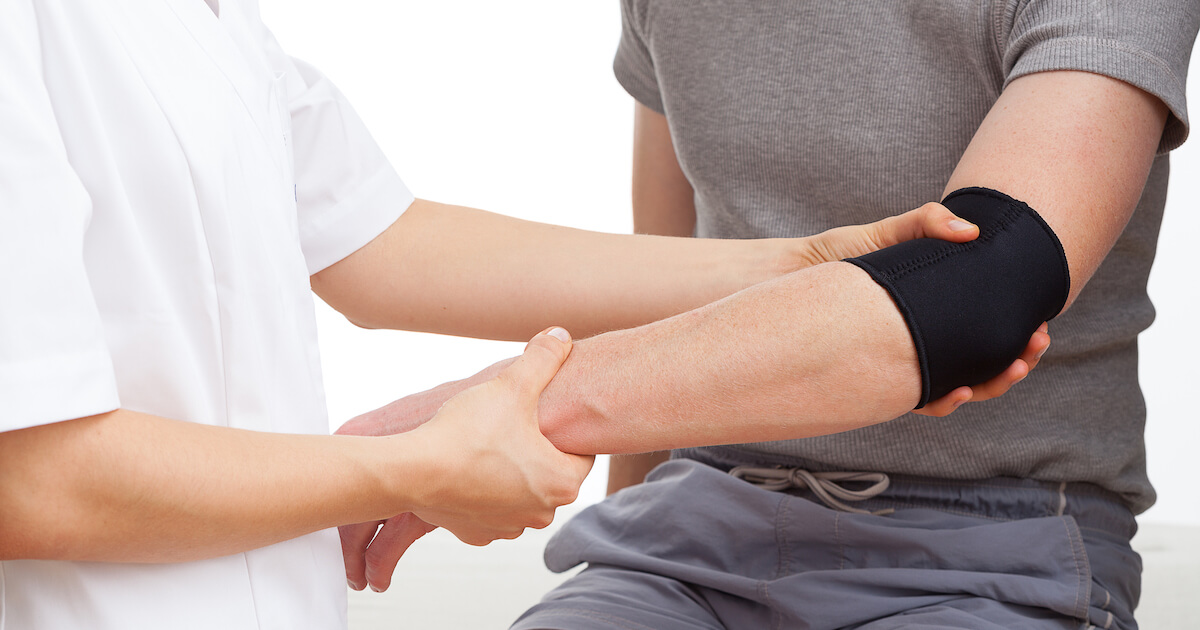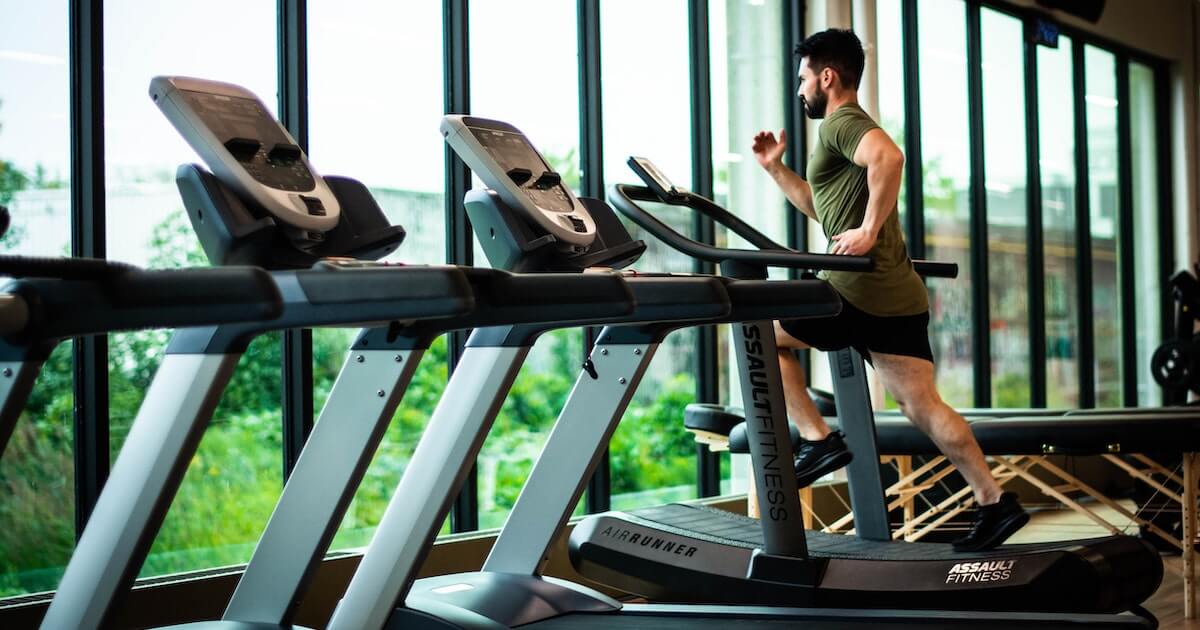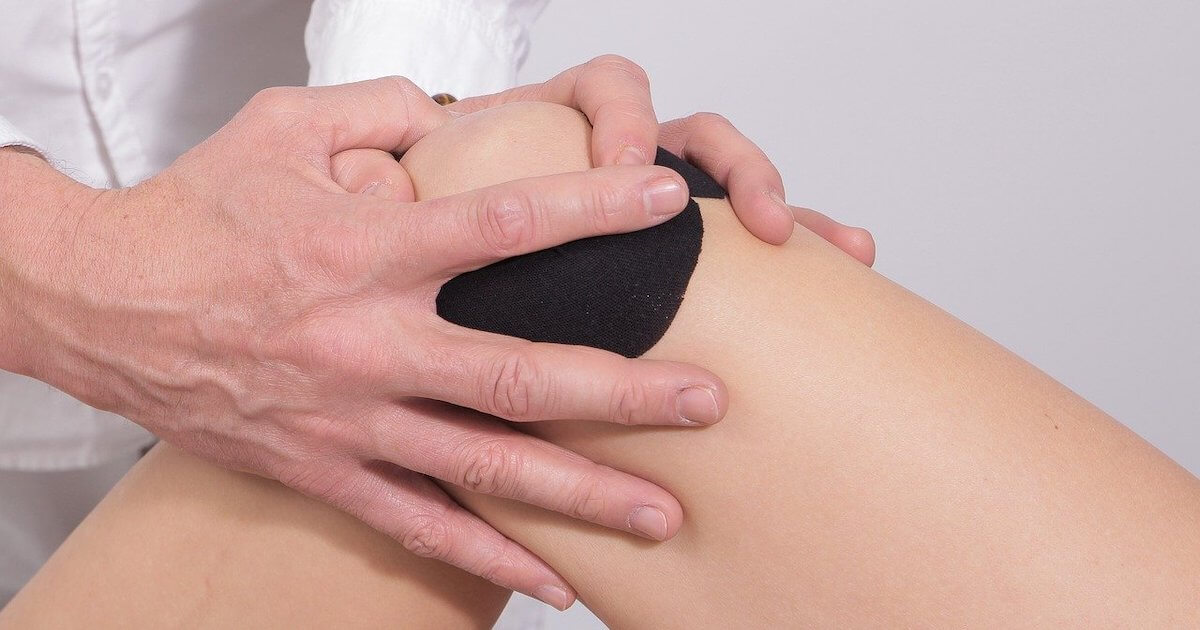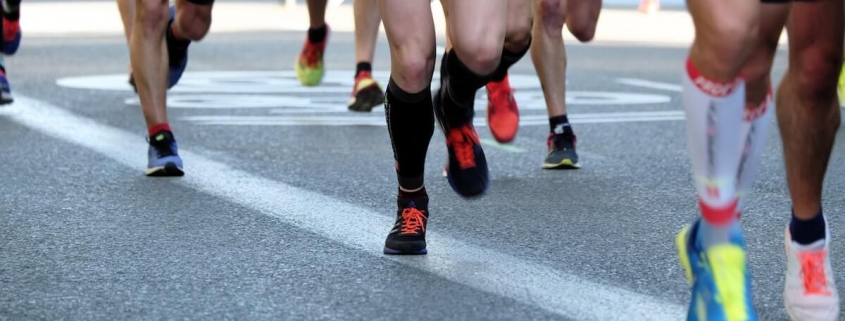Tag Archive for: kinesiology
What Is Tennis Elbow? and What Causes It?
Tennis elbow (technically known as lateral epicondylitis) is a form of tendonitis that results from inflammation and small tears in the tendon connecting your elbow joint to your forearm muscles. Tennis elbow pain is typically felt at the outer elbow and along the forearm, with symptoms that become more pronounced when the affected tendons and muscles are activated (by raising or straightening your wrist and hand, for example). Fortunately, it’s a condition that is relatively easy to remedy, with non-invasive tennis elbow treatment options that relieve pain and repair injury.
Signs & Symptoms of Tennis Elbow
The most common signs and symptoms of tennis elbow include:
- Weakness and pain typically affecting one arm but can affect both arms, depending on the aggravating activity (e.g., weightlifting where wrists and forearms and subjected to repetitive strain from pulling and weight-bearing movements).
- Aching or burning pain that typically starts at the bony prominence of your outer elbow
- Pain can sometimes extend from your outer elbow up through your forearm to the back of your hand.
- Pain can worsen at night or when using the affected arm to hold tools, weights, or other sports equipment.
- Sudden or worsening grip strength.
- Pain or discomfort when shaking hands, gripping items, turning doorknobs, holding a hammer or coffee mug, or lifting and straightening your wrist.
Tennis Elbow Risks & Contributing Factors
The common name used to describe lateral epicondylitis (tennis elbow) can be deceiving. While it is a common condition amongst athletes, anyone can suffer from tennis elbow, especially if your occupation or recreational activities involve repetitive lifting and extension of the hand or bending of the elbow.
A few examples of activities and contributing factors that can cause tennis elbow include:
- Age: most commonly experienced by adults between the age of 30-50
- Racquet sports (tennis, badminton, squash, ping-pong)
- Lacrosse
- Weightlifting/Olympic weightlifting and CrossFit
- Typing
- Using wrenches, hammers, and other tools (plumbers, construction workers, mechanics, stonemasons, painters)
- Laser technicians
- Chefs, butchers, and line cooks
- Violin playing
- Golfing
In rare cases, tennis elbow pain can occur without any apparent cause. Regardless of the cause, discomfort indicates that it’s time to seek tennis elbow treatment before the condition progresses.
Effective Tennis Elbow Treatment in Victoria, B.C.

In a significant majority of cases, the good news is that tennis elbow pain can be effectively resolved with non-invasive treatments. Effective tennis elbow treatment sometimes only requires physiotherapy, and in other cases, a tailored combination of targeted therapies, including:
- Physiotherapy
- Kinesiology
- Shockwave Therapy
- Chiropractic Care
- Acupuncture
- Ultrasound
- Cold Laser
- eToims
- A holistic approach to treatment
Never Ignore Pain
Pain indicates that it’s time to seek treatment. Sudden or worsening pain or discomfort is your body’s way of telling you that something is amiss and requires correction. While most tennis elbow cases aren’t serious, subjecting the affected area to continual strain could result in nerve compression and significant damage to muscles and tendons requiring surgery if left unaddressed.
Because various contributing factors can cause conditions such as tennis elbow, we take a comprehensive approach to providing tennis elbow treatment at Diversified Health Clinic. The first step is to book an appointment with one of our physiotherapists. When we meet with you, we’ll start with a thorough initial consultation and assessment before tailoring a treatment plan for you that relieves pain while specifically addressing your condition. We’ll also show you specific stretches and exercises you can continue at home to aid your recovery and maintain your results. Our goal is to help you return the activities you love and enjoy without the interference of pain or risk of injury.
Things You Can Do to Help Prevent Tennis Elbow Before and After Tennis Elbow Treatment
- Rest: after assessing your condition, our physiotherapist will be able to recommend how much rest your affected elbow needs before returning to your usual activities.
- Correction: our physiotherapist and kinesiologist will assess your postural and movement patterns and correct any dynamics that contributed to your pain and condition.
- Stretching and Conditioning: Treating and preventing the recurrence of joint, tendon, nerve, and muscle pain often includes stretches and exercises that strengthen stabilizing muscles to protect from further injury.
- Support: In cases where strain cannot be avoided, wraps and sleeves may be recommended as part of your tennis elbow treatment plan.
- Anti-inflammatories: While pain should never be ignored, in the interim, over the counter anti-inflammatories such as ibuprofen may be taken to help temporarily relieve pain and reduce inflammation.
If You Suffer From the Symptoms of Tennis Elbow:
Give our team of practitioners at Diversified Health Clinic a call today at (250) 382-0018 or book an appointment online. We’re happy to help answer your questions, address the cause of your pain and discomfort, and get you on the road to recovery.
The cool, crisp climate of autumn in Victoria marks the start of another running season, including local running events and marathons. If you’re just getting back into running, as you increase your training frequency, it’s essential to prevent injury by paying attention to aches and pains and addressing them before they become more troublesome. For example, here are the typical signs and symptoms of Runner’s Knee, which is especially common amongst new and experienced runners.
What Is Runner’s Knee? and What Causes It?

Runner’s Knee is an umbrella term used to describe patellofemoral pain syndrome: a variety of conditions that contribute to pain surrounding the knee cap (technically referred to as your patella). The patella is prone to overuse injuries caused by activities that place repetitive pressure and strain on the knee joint and surrounding muscles and tendons.
Examples of activities that put stress on the knee are sports that involve lots of running and directional changes (such as soccer, lacrosse, skiing, and rugby), and activities that result in repeated knee flexion and extension (such as cycling, swimming, and weightlifting).
Runner’s knee can also be caused by direct injury, obesity, misalignment of the knee joint, arthritis and inflammation, muscle and tendon strain, high-arches, fallen-arches (flat feet), or over-pronation of the feet. Regardless of the cause of Runner’s Knee, prompt treatment can help relieve pain and prevent further damage to the complex biomechanics of your knee joint.
Signs & Symptoms
The most common symptom of Runner’s Knee is a dull, aching, or throbbing pain that radiates around the knee cap. The pain can also be felt in the back of the knee where the thigh connects to the patella. Pain can come on suddenly or worsen during repetitive movements that flex the knees such as running, cycling, climbing stairs, squatting, or kneeling.
Summary of Contributing Factors
- Obesity
- Incorrect form during exercise
- Repetitive strain on knee cap/patella
- Direct trauma or injury to the knee
- Fallen-arches, high-arches, over-pronation, and other gait issues
- Occupational injury and overuse of the knee joint
- Arthritis and inflammation of the joints
- Overstretching of the tendons and muscles surrounding the knee
- Knee joint alignment issues
Things You Can Do to Help Prevent Runner’s Knee

- Weight management and regular exercise
- Adequate stretching before and after sports and exercise
- Icing knees and elevating legs after repetitive strain from cycling or squatting sessions to help reduce inflammation
- Wrapping knees with compression bandages or knee sleeves for added support during sports, leg-pressing, and heavy squatting
- Gait assessment and correction if needed for flat feet or fallen arches
- Adequate rest and recovery following training
- Focus on proper form and hip, knee, and ankle alignment during sports and squatting
- Nutrition that incorporates anti-inflammatory foods including healthy proteins and fats
- Proper footwear to prevent excess shortening and tightening of thigh muscles
- Core conditioning to support proper body dynamics
- Investing in proper footwear for each activity—replace worn out training shoes and address gait issues with orthotics
- Running on low-impact surfaces such as turf and soft chip trails
And finally, two other important things you can do to prevent Runner’s Knee and other injuries:
- Ease into new activities and training frequencies. Avoid pushing your body too far too soon. Instead, give your body a chance to adapt to the new stimulus. Previously underactive muscles such as glutes and stabilizer muscles need time and deliberate focus to properly fire according to the new movement patterns and stressors.
- Book a professional assessment with your kinesiologist, chiropractor, or physiotherapist to identify and correct any joint alignment issues and chronic muscle tension.
Here Are a Few Local Running Groups and Clinics to Consider Joining
While many running and racing events are subject to last minute cancellations, some are being substituted with virtual runs. The RunGuides website offers regular updates on local running events, and the AllTrails website displays reviews, photos, directions, and maps of Victoria’s best outdoor walking, hiking running trails.
Island Road Racers: The Facebook Group of a Victoria running club that welcomes running enthusiasts of all ages and abilities.
BDHQ Run Clinic: Ironman Triathlete, Jason Ball, offers seasonal running clinics and workouts for beginner to advanced runners.
Prairie Inn Harriers Running Club: Official website for Victoria’s longest-standing running club. Established in 1978, PIH is a running community that welcomes runners of all ages and abilities to partake in their running clinics, workouts, weekend, morning, and evening runs and youth programs.
Greater Victoria Trail Running: The Facebook Group of a local running club that welcomes participants to their outdoor trail runs within the Greater Victoria area.
Effective Treatments for Relieving Runner’s Knee in Victoria, B.C.

As we’ve mentioned before in other articles: pain indicates that it’s time to seek treatment. When it comes to knee pain, the sooner you have things checked out, the better. A damaged knee joint is difficult to repair, and so prompt treatment when pain arises is crucial.
Because Runner’s Knee can be caused by a variety of contributing factors, at Diversified Health Clinic, we take a comprehensive approach to treating Runner’s Knee. Effective treatment often requires a combination of kinesiology, physiotherapy and chiropractic care, which may involve targeted treatments, including:
- Deep Tissue Laser Therapy
- Graston Technique
- Therapeutic Ultrasound
- Athletic Taping
- TENS Therapy
- Shockwave Therapy
- Orthotics
The first step in proper treatment is to book an appointment with our kinesiologist. When we meet with you, we’ll start with a thorough initial consultation before tailoring a treatment plan for you that relieves pain while specifically addressing your condition. Our goal is to help you return the activities you love and enjoy without the interference of pain or risk of injury.
If You Suffer From the Symptoms of Runner’s Knee:
Give our team of practitioners a call at Diversified Health Clinic today at (250) 382-0018 or book an appointment online. We’re happy to help answer your questions, address the cause of your pain and discomfort, and get you on the road to recovery.
News & Events
- The Benefits of Shockwave Therapy Treatments February 28, 2023
- Piriformis Syndrome: A Real Pain in the Butt January 31, 2023
- Searching for a Personal Trainer in Victoria to Help You Achieve Your Goals? December 31, 2022
- Are Winter Blues + Holiday Stress Making You Feel Grinchy? November 28, 2022
Diversified Health Clinic
Mon – Thurs: 8:00am-5:00pm
Friday: 8:00am-4:00pm
Saturday: 9am-5:00pm
Sunday: Closed




